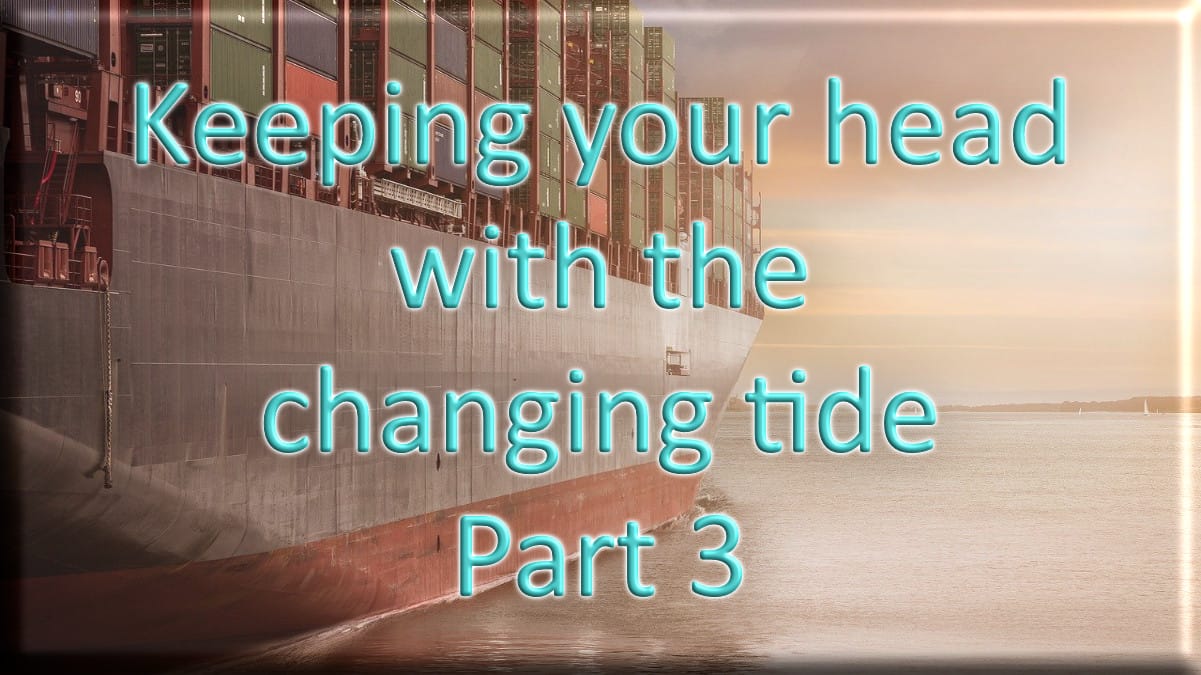You might wonder why an electronic customs declaration would reduce the stress of exporting. In truth delays are costly. Delays can impact revenue and also impact customer experience. You’ll also want to avoid the cost and stress for staff scrambling to find missing paperwork. In short, the more streamlined and accurate the process, the better the experience for everyone. But what exactly does that look like?
Looking for an in-depth guide on the Business System? Check out Business System: An Essential Guide to Growth. This guide explains what it’s all about, why it’s important to business, and the steps involved.
Keeping your head with the changing tide
In this series “Keeping your head with the changing tide”, we grapple with the changes in trading with the EU. We explore how to steer your business systems for better export results. Firstly, we set the scene in “Export System: Gain Better Clarity to Avoid Confusion”. Our second article looked at “How to Reduce Export Cost with Digital”. This, our third article, looks at reducing paperwork and improving flow in “Avoid Feeling Exposed with an Electronic Customs Declaration”. Finally, we round off with “How do I Manage Change and Keep People Happy?”.
The human experience
What’s an electronic customs declaration got to do with customer or employee experience? To answer that, imagine yourself in your customers shoes. You’re excited about your order from the UK. Then you get a text, and suddenly your excitement turns to disappointment, there’s a delay. That delay could have a big impact. There might be knock on effects. It might impact the customer’s customer or create more costs. Now your customer is feeling anxious and calling your service desk.

Back in your office you know that a big order is stuck in customs. That means a delay to getting paid, and there’s a lot of money tied up in that order. It’s a new customer and in these times, you want to create a good impression to increase the chance of more work. The pressure’s on to figure out what’s happened. Staff are feeling the stress as they discover that the export documentation is incomplete, and now the customer is on the phone! Staff had checked and double checked, and don’t know what’s happened.
Completing a Customs Declaration
There are two methods to create a customs declaration.

Method one is to enter the export information manually. Now this depends on the method. If you’re using a carrier, you’ll login to their system and type in all the details. The address, the customers identifier, products, the commodity codes, quantities, value. You’ve got to make sure it’s correct. It takes time to enter, it takes time to check. You might be able to print shipping labels etc. but it’s largely time consuming and potentially error prone. If it’s a UK customs form such as C1602 Departure Form, you can do that online and print it out. Then you can email it to HMRC.
Method two is to use an electronic customs declaration. Your system electronically sends information directly to your carrier or HMRC. It’s like running a report, you press a button, and off it goes. Better still, you can track the status, and nothing goes missing.
Going with the grain
In a 2014 Flash Eurobarometer report, three-quarters of respondents say that the introduction of electronic customs had a positive impact on their company. That said, the investment is only worth it when you achieve a certain volume or order size.
In the UK and in the EU customs, it’s mostly electronic and that’s the direction of travel. It’s driven by efficiency, but also safety and security. With that in mind, it makes sense for businesses to optimise for those downstream systems. The closer the business gets to delivering what’s needed, the better the efficiency and cost. It’s a forward integration.
Finally
Carriers want your business and have good web interfaces for you to manually submit your customs information. If you want choice, then the manual approach means learning and populating multiple systems. The next step up is to use an electronic submission where you control the data. In this case it may make more sense to use an integration platform to avoid maintaining multiple interfaces.
If you’d like to have a chat about your export system needs, give me a call on 01344 266567 or contact me on rhounsell@kr5consulting.com or DM on LinkedIn to arrange an initial meeting.
KR5 Consulting are an independent business consultancy specialising in business technology and transformation. We support senior leaders, looking to be more effective in harnessing technology to empower employees and improve customer experience.
If you’d like to explore the ideas in this article further or need help and advice, please contact Rogan at rhounsell@kr5consulting.com – to arrange an informal chat.
If you’ve found this blog interesting or useful, please ‘like’, ‘comment’ or ‘share’ so it can help others too.

